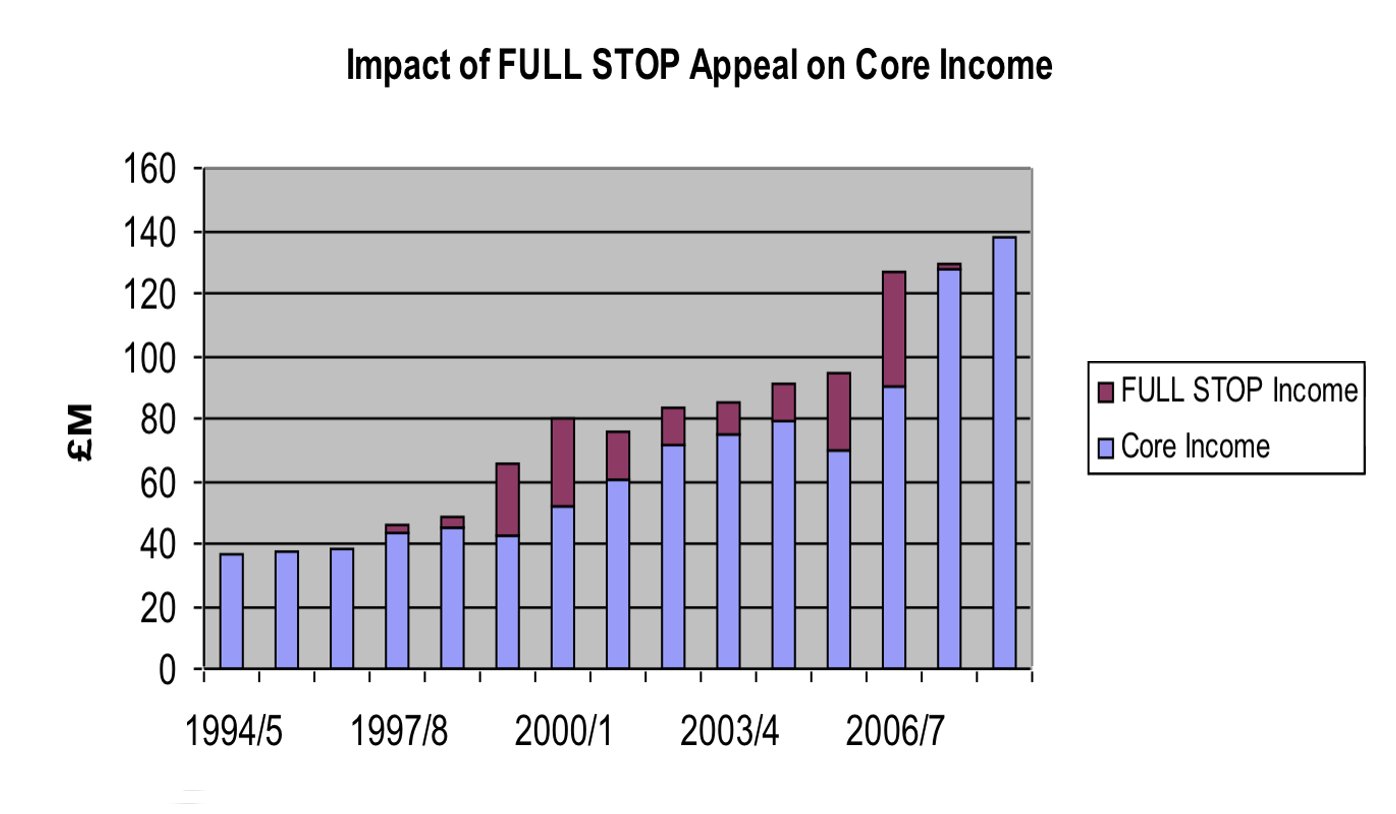<em>“Remind me why you’re here?”</em>
The ups and downs of the two most successful Appeals in the last century.
The Centenary Appeal
When I joined the NSPCC at the end of 1979 its fundraising was desperately old-fashioned and its reserves were down to two months expenditure. I decided that the best way to tackle this was through a Major Appeal. What is more, with the previous largest Appeal in the UK having raised £10m, I deliberately set an ambitious target of £12m.
I had to convince the Trustees that this was the right approach. The wonderful Lady Mountbatten suggested it was too high. “If you aim for £12m you might only get £10m. If you aimed for a more modest £5m, you might get £6m.” I responded, “Yes; but which would be best for children? A £10m failure, or a £6m success?” It was the very ambition that brought the Trustees on side.
From this chart you will see how we achieved significant growth in the three years leading up to the Appeal. But look at what happened during the Centenary Appeal. The purple portions of the bars show the Appeal income.(The Appeal generated £15m against its £12m target.)
We had expected core income to decrease during the Appeal, as people gave to the Appeal rather than to core income. In fact, core income benefitted from the halo effect of the Appeal and increased considerably.
However, what is possibly most significant is the impact of the Appeal on future income, which saw extraordinary growth. Look at the blue bars. By 1991/92 the Appeal seems like just a blip on our growth, rather than the cause of it.
The Full Stop Appeal
Then, in 1995 the Senior Management Team looked at what we might do at the turn of the Millennium. I was asked how much I could raise. At that point the largest Appeal had been £100m, so I quickly said £250m. I realised it was probably impossible; but why not aim big?
You will see the incremental growth during the period leading up to the Appeal. Then, again, the purple sections of the bars show the Appeal income. (The Appeal, very surprisingly, raised £274m against its £250m target.)
Despite all the external publicity being focused solely on the Appeal, if you look at the years 1999-2006 as a whole, you will see that the growth in core income eclipses the Appeal income and, as with the Centenary Appeal, continued beyond the Appeal. (There is a good reason. A massive increase in recruiting regular givers. I’ve written a separate thought piece about that. “The practical case for regular giving.”)
The fundamental contribution to success
If you were to ask me what was the single most significant factor that caused the success of both Appeals, it was my insistence that we allow three years of preparation from the decision of the Trustees to the launch of the Appeal. That was hard. It required the Trustees to think long-term. But there was only a small amount of additional expenditure during those three years; one staff member.
What I needed was calendar time.
Let me give an example. The Chair had a great friend he thought might be a great ally. But the first time we could meet was three months away. The date was firmly booked in the diary. But, the day before the meeting the friend had to cancel. So, another three months.
Finally, we met. He asked a lot of great questions. He seemed very enthusiastic. He asked for time to consider. Of course. He should.
Then another three months.
When we went in to this meeting, he said, “remind me why you’re here?”
He went on to be one of the most productive members of the Appeal Board. But it took time. Rushing it would have been hugely counter-productive.
⟶ About Giles⟶ Services⟶ Back to overview

